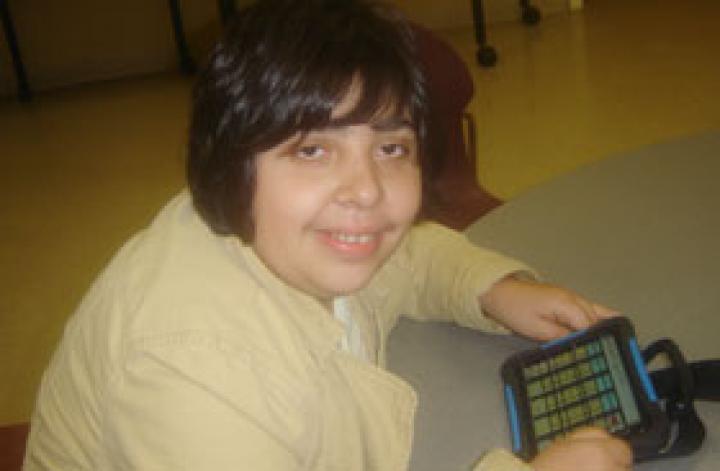Share
This story is written by Rachel Bouvin, M.S./CCC-SLP, a Senior Speech-Language Pathologist at YAI's Center for Specialty Therapy.
I really had no idea how much receptive language Regina, a 23-year-old, understood when she was evaluated at YAI's new augmentative and alternative communication program in Kew Gardens. She relied primarily on gestures and unrecognizable sounds for communicating. But once we provided her with a computer-based communication device, about the size of an iPad, all that changed.
When asked what she wanted to eat for lunch she responded, "I want chocolate pudding with whipped cream." I was amazed. Regina had been limited in her ability to express her desires and now she could ask for something specific with the aid of the device. All I kept thinking was that we had to get Regina some pudding!

It reminded me how important it is to presume competence in those we work with and really explore all options to augment communication. We should shoot for the stars. Today, there are endless opportunities for people to communicate.
Regina, who is expected to receive her new device later this month, is the go-to person in her YAI day program. One day, I needed the charger to the digital camera and she led me to the office where it was stored. Everyone knows if you ever need something, just ask Regina. She's already extremely independent, happy and always smiling. I can’t wait to see how her life changes once she has a voice.
The people we support often have their own ways of gaining others' attention and making their wants and needs known. It may be a gesture, pointing to something of interest, a tug on a person's sleeve to get a desired object or item, or blinking twice to say "yes." To some extent, this form of communication may be understood by staff and family members. However, if we really investigate the efficacy of their established systems, they are not a very effective means of communication.
As a speech pathologist, I absolutely encourage individuals to express themselves by using total communication approaches. These methods need to be understood in all contexts and settings.
While providing speech therapy to individuals at several day programs, it was evident that some of the systems they were using were failing them. There were several men and women who essentially did not have a voice and it was time for a change. YAI decided to open an augmentative and alternative communication program at our Center for Specialty Therapy in Kew Gardens. Our goal is to ultimately reduce the sometimes lengthy waits associated with these types of specialty communication services.
The evaluations assess an individual's ability to use and access a non-speech or speech-generating device to become a more functional communicator. They range from emergent to context dependent to independent, using complete sentences to communicate with others. Everyone should have the ability to express their needs and desires, to converse with peers, and to tell us exactly how they feel -- whether it's pointing to an icon that represents "sleepy" or verbally saying, "I want to go to bed."
I am excited to be part of a team that is opening doors for as many individuals as possible, enabling them to be heard by giving them a voice and a new sense of independence.
